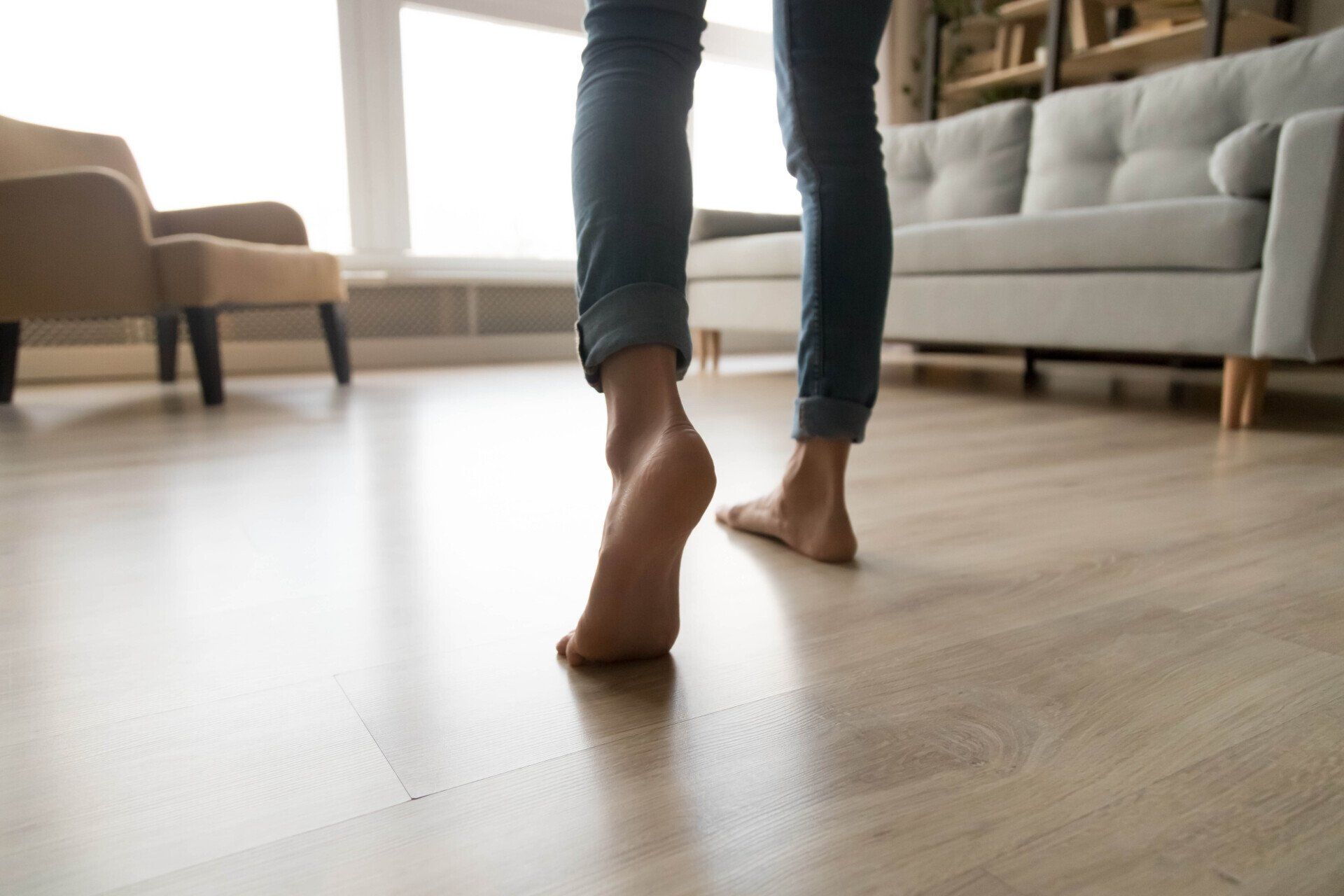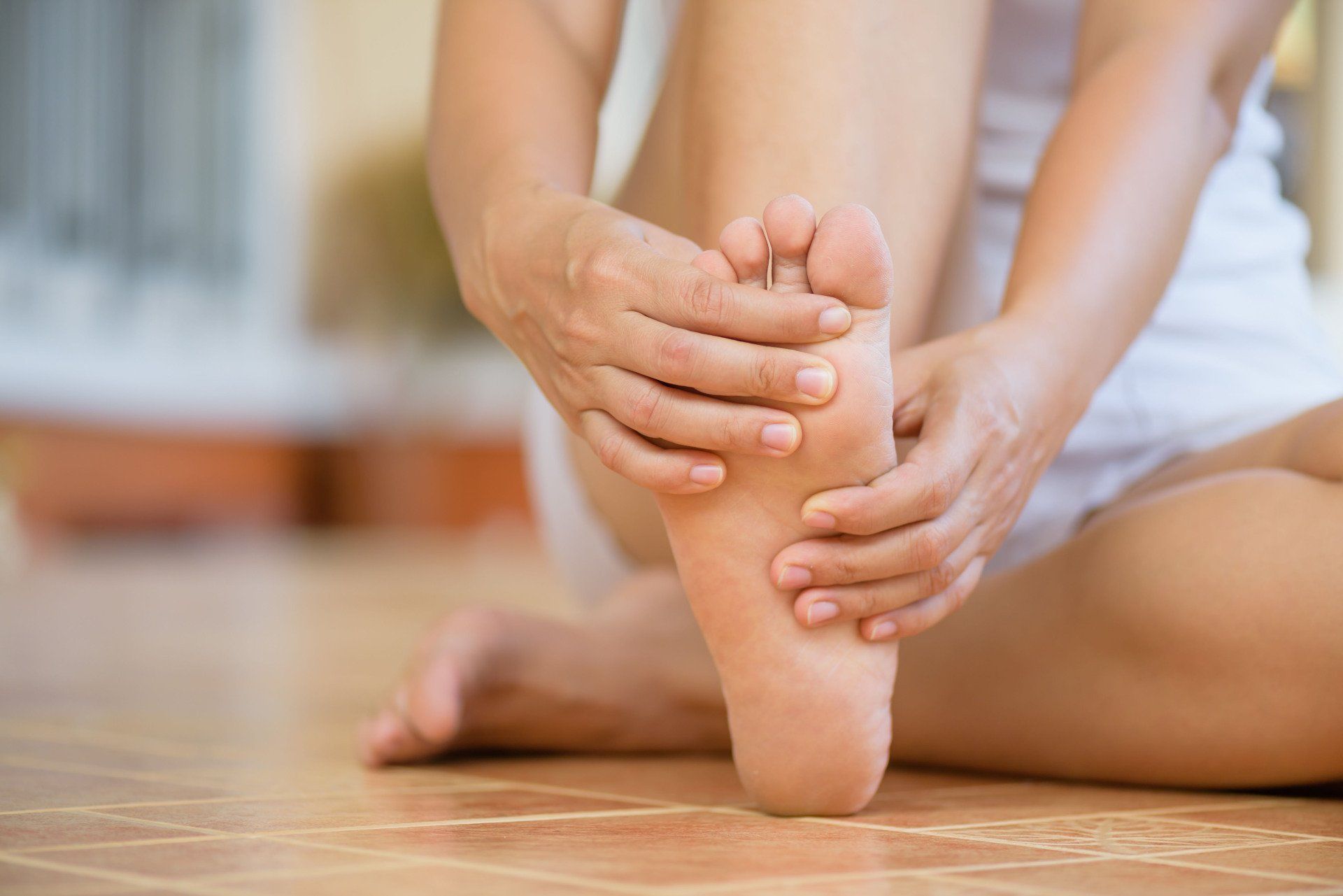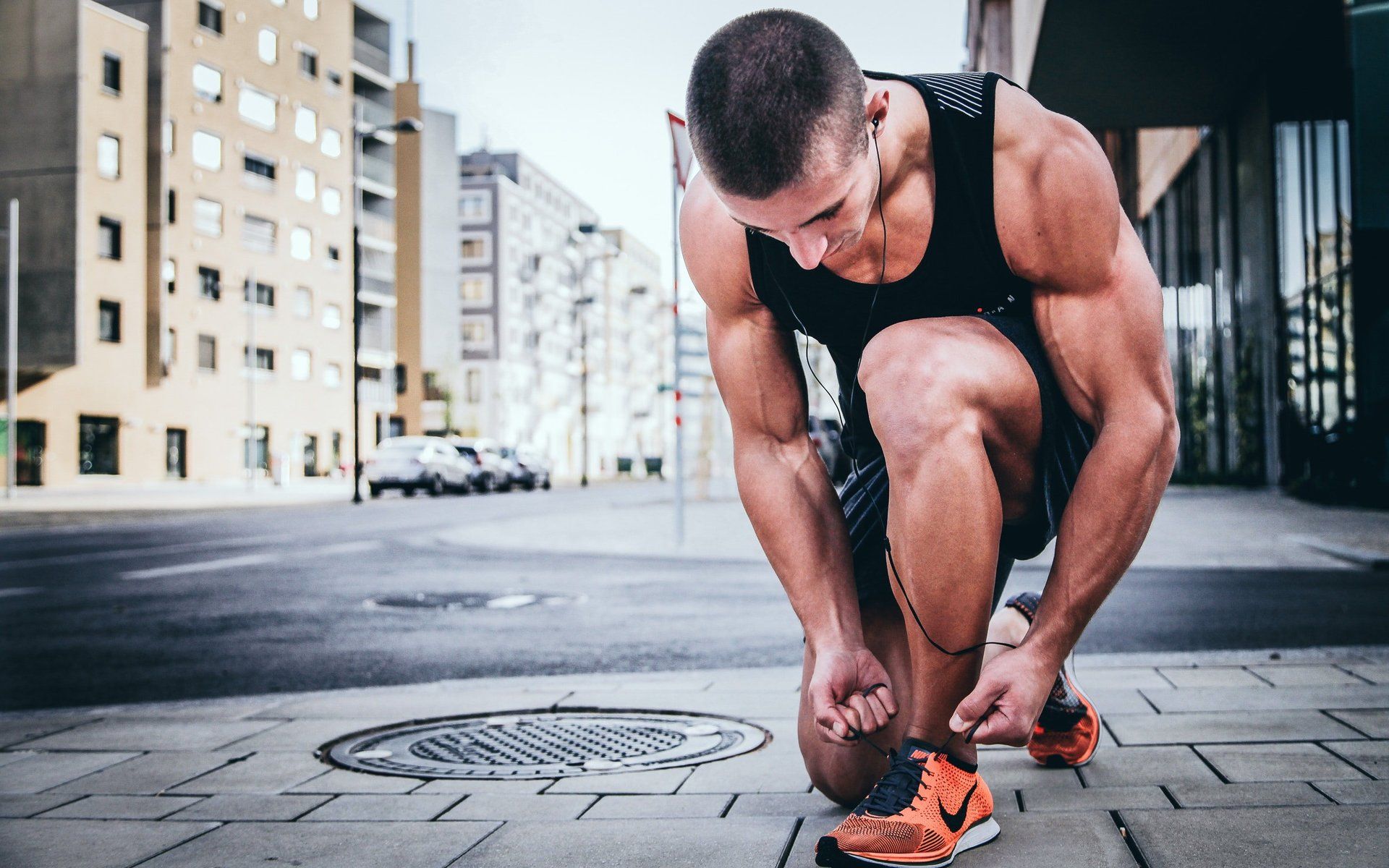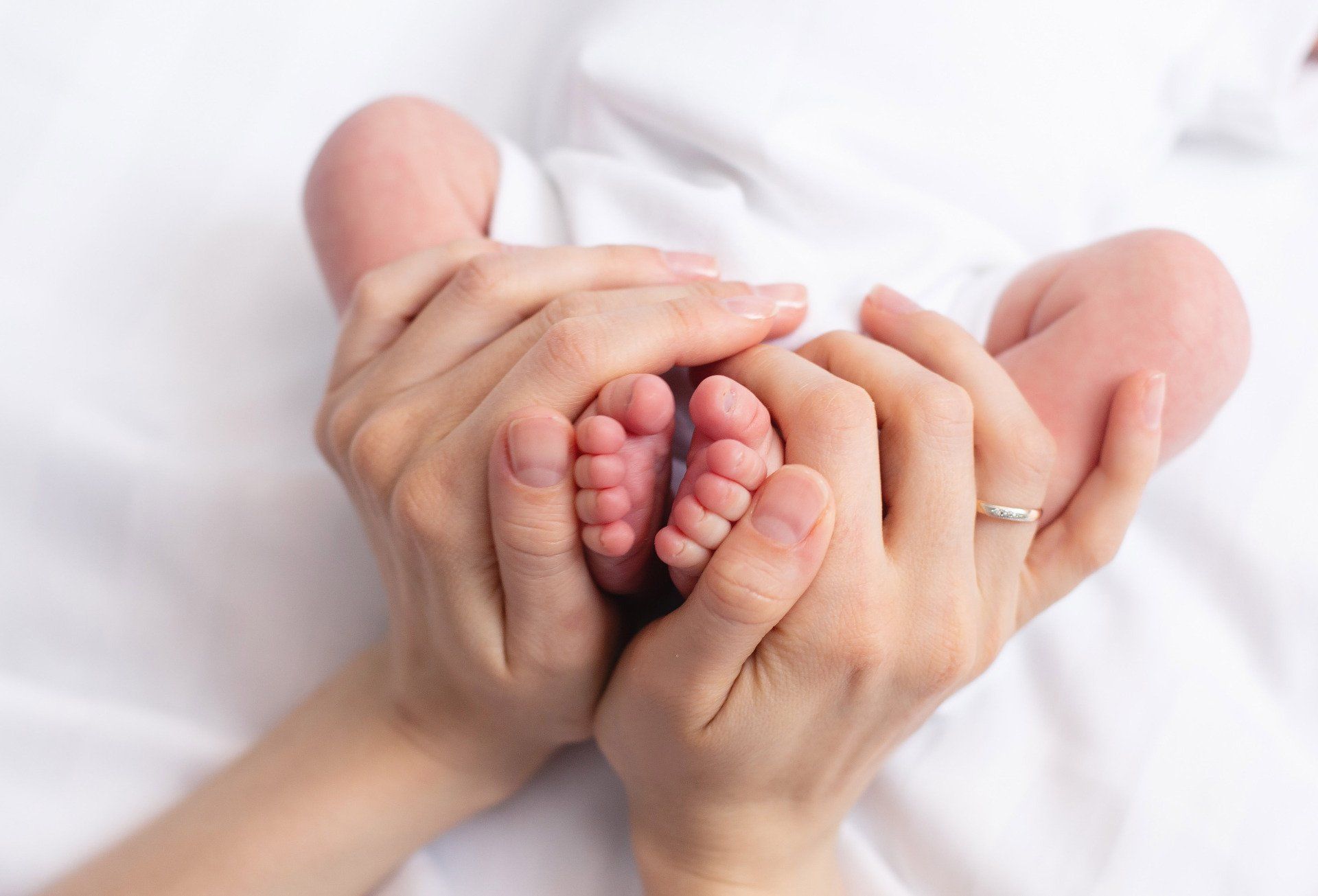Blog
Blog
Blog

By Functional Foot & Ankle Group
•
15 Oct, 2020
Some of you may have done lower limb rehabilitation before by one of our Sports Podiatrists. It’s more than likely you’ve been given calf raises to perform. The humble calf raise is one of the best ways to train your lower limb and leads to incredible performance gains when progressed steadily. According to the Sports Fitness Advisor website, a training program that includes calf raises can help you increase your vertical jump by as much as 12 inches. It uses a vast array of lower limb muscle and is commonly used to strengthen and build up tolerance to the Achilles Tendon and Plantar Fascia. Now there are many variations to these and we perform them barefoot where possible. Now you may have to start with less and build up to this. Beginning on both legs try performing 3 x 10-15 repetitions of double leg calf raises every 2-3 days. Once mastered, progress to performing single leg calf raises and then progress to doing them on a step or holding a weight. Simply put, doing these regularly will see you jump higher, run faster and strengthen your intrinsic and extrinsic foot muscles. Loading these areas will allow you to tolerate greater force and decrease the risk of injury as well. One of our helpful Sports Podiatrists are here to help you get stronger from the ground up.

By Functional Foot & Ankle Group
•
15 Oct, 2020
Our very own Podiatrist Ben wrote an blog post mid- last year for local children’s shoe company ‘Little Leather’. It seems more applicable now than ever to get outdoors and get grounded with our kids. Here's a snippet and click on the link at the bottom for further helpful tips. Introducing Benjamin Hodgetts, Functional Sports Podiatrist and advocate of Little Leather soft sole shoes. I first met Ben caring for my own foot health in early 2019, As passionate in his field as I am about our shoes, I just knew we had to collaborate to bring his knowledge and intimate understanding of little one’s feet to you. And wait there’s more…. if you’ve loved what you have read here, we have a free guide you can download with more on foot health as well as some play ideas to grow strong happy & healthy feet. Here is Benjamin to take the floor… My name is Benjamin Hodgetts and I am a Functional Sports Podiatrist and father to a 14-month-old girl. I don’t know about you, but I couldn’t wait until my little girl started walking to get her into her first pair of Converse. It was more for a cute Instagram shot, than a benefit to her of course, hell, we are all guilty of it. However, I believe in strong foundations from the ground up…. I encourage you to get your children walking barefoot, to allow the feet to develop the muscles as much as possible. Like anything, developing our children starts with a strong foundation, where better to start than their feet, I encourage you to get creative parents, lead by example and let your children follow in your footsteps (pardon the pun). Let’s get barefoot people, not only is “grounding” itself beneficial on many levels, walking barefoot on as many surfaces and materials as possible, allows the feet to “think” and develop best, in sync with the rest of our little one’s milestones. We understand that when it comes to your little one and advice about their development only the best will do. So we’ve worked with experts in their fields, Functional Sports Podiatrist, Benjamin Hodgetts and Play Advocate Casey Patch to bring you a parents guide to happy & healthy feet for kids. So now you no longer need to research “all the things”. It’s all laid out for you here in our free guide. And you can get back to the fun stuff, chasing after your little ones. Includes- Lets get barefoot 3 Key areas to exercise Benefits to strengthening feet Play for strong feet Get your guide HERE

By Functional Foot & Ankle Group
•
15 Oct, 2020
As Summer sporting activities begin to launch as the weather improves, athletes need to be aware of some of the most common injuries that can occur like stress fractures or plantar fasciitis. These injuries can be devastating if you have a strict training program by sidelining either your training or team involvement while waiting for injuries to heal. The team at Functional Foot & Ankle Group are able to not only treat common sport related foot injuries, but help you avoid them in the first place by recommending careful and gradual training implementation. Here are some of the most common injuries to avoid this Summer: 1. STRESS FRACTURE Stress fractures are most often experienced by athletes that participate in high-impact sports like running, basketball, tennis, football and gymnastics. Stress fractures happen when the feet experience repetitive stress, pressure or acute injuries. This type of fracture is not a broken bone; A stress fracture is a small crack in the surface of the bone. They usually occur in the middle of the foot and toward the front of the foot and should be diagnosed and treated by an experienced podiatrist. 2. PLANTAR FASCIITIS Plantar fasciitis is most often experienced by athletes or people who spend a lot of time on their feet. It occurs when the band of tissue (the plantar fascia) supporting the arch stretches and tears. Once this happens, it becomes inflamed and causes pain and discomfort commonly upon rising out of bed or after periods of rest. Sufferers can experience pain in the heel or in the area of the arch. The team at Functional Foot & Ankle Group have effective treatment plans for Plantar Fasciitis. 3. ACHILLES TENDINITIS Another common sports-related foot injury involves the Achilles tendon. This tendon is the largest tendon in the body, and when it is overused or as it wears down over time, Achilles tendonitis can occur. Many cases of Achilles tendonitis can be treated at home but it’s important that the condition is diagnosed by a podiatrist and a comprehensive treatment plan created to ensure the best final result is achieved. In extreme cases, failing to address achilles tendonitis can result in the need for surgery. 4. NEUROMA If you have recently experienced pain in the ball of your foot or tingling or numbness, chances are you are suffering from a neuroma. This is a foot condition that occurs when there is pressure on a nerve in the forefoot. People who have neuroma also experience pain between their toes while walking, feeling of numbness or tingling in their toes. Neuromas can be a result of mechanical pressure, anatomical shape of the patient’s feet or tight calves, incorrect shoe size or style or trauma to the foot commonly. Athletes will find this debilitating at times and best to get it sorted quickly with simple, often cost effective solutions. 5. BIG TOE PAIN This can be a common and painful problem, as it is your main propulsive leaver during activity. In short, the big toe and its joint provides a lever arm giving your foot the “spring in its step”. If your big toe joint isn’t functioning at its best, there can be osteoarthritis, bunions (Hallux Abducto-Valgus), Sesamoiditis or Bursitis to name a few. Our Podiatrists are experienced in assessing and treating such problems with a variety of methods, providing education, treatment and planning to get you back to sport quickly and effectively. D on’t let sports-related foot injuries like keep you out of the game. If you’re suffering from any of the symptoms listed above, book an appointment with one of our team to properly diagnose and treat your condition and get you primed for Summer training.

By Functional Foot & Ankle Group
•
15 Oct, 2020
A common concern echoed by parents is wondering whether they should be worried about their child’s flat feet (also known as flatfoot). Don’t panic if your son or daughter has flat feet — almost all babies are born without that visible arch. Babies have a fat pad on the inner border of their feet that hides the arch and disappears over time. Flat feet usually fade away by the time a child is six years old, but about two out of every ten kids will continue to have flat feet into adulthood. There are two different types of flat feet your child could develop, so be sure to consult with one of our podiatrists to receive a proper diagnosis and treatment plan. TYPES OF FLAT FEET Flexible flatfoot: This is the most common type of flatfoot in children. Children have flexible bones and joints, and if your son or daughter has flexible flat feet, they shouldn’t be experiencing any pain or discomfort. If you’re not sure, have your child stand on his or her tiptoes and look at their feet—does an arch become visible? If so, they likely have flexible flatfoot, which usually requires no treatment from a podiatrist. Rigid flatfoot: Rigid flatfoot is the least common type of flatfoot, but also the most serious. It can often be the result of problems with the bones in the feet and can cause pain and disability. It’s rarely seen in young children and will usually become apparent during the teen years. TREATING FLAT FEET If our team of specialist podiatrists determine that your child has flexible flatfeet, and your child isn’t in any pain, it’s likely that no treatment will be recommended. However, some children with flexible flatfoot may experience some aching in feet or legs after activity; this can usually be easily treated with cushioned arch support and strengthening exercises. I f you’re concerned that your child has flat feet, it’s important to bring them into the clinic for a full diagnosis by one of our specialist podiatrists who will guide your child with appropriate treatment path.
Willagee
Melville Wellness Centre
75 Archibald St,
Willagee WA 6156
Sportsmed Murdoch (Sports Based)
Suite 4 Medical Clinic
100 Murdoch Drive
St John of God Health Care Murdoch,
Murdoch WA 6150
8.30AM – 6PM Mon -Fri
Murdoch
Sportsmed Murdoch (Sports & Injuries only)
Suite 4 Medical Clinic
100 Murdoch Drive
St John of God Health Care Murdoch,
Murdoch WA 6150
3PM-7PM Thursdays
Look around
Disclaimer: The information in this website is not intended to be a substitute for professional Podiatric or medical advice. Always seek the advice of your Podiatrist or other qualified health practitioner before starting any new treatment or if you have any questions regarding a specific health condition.
Site by Helium Marketing
